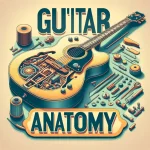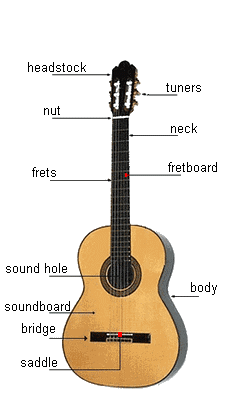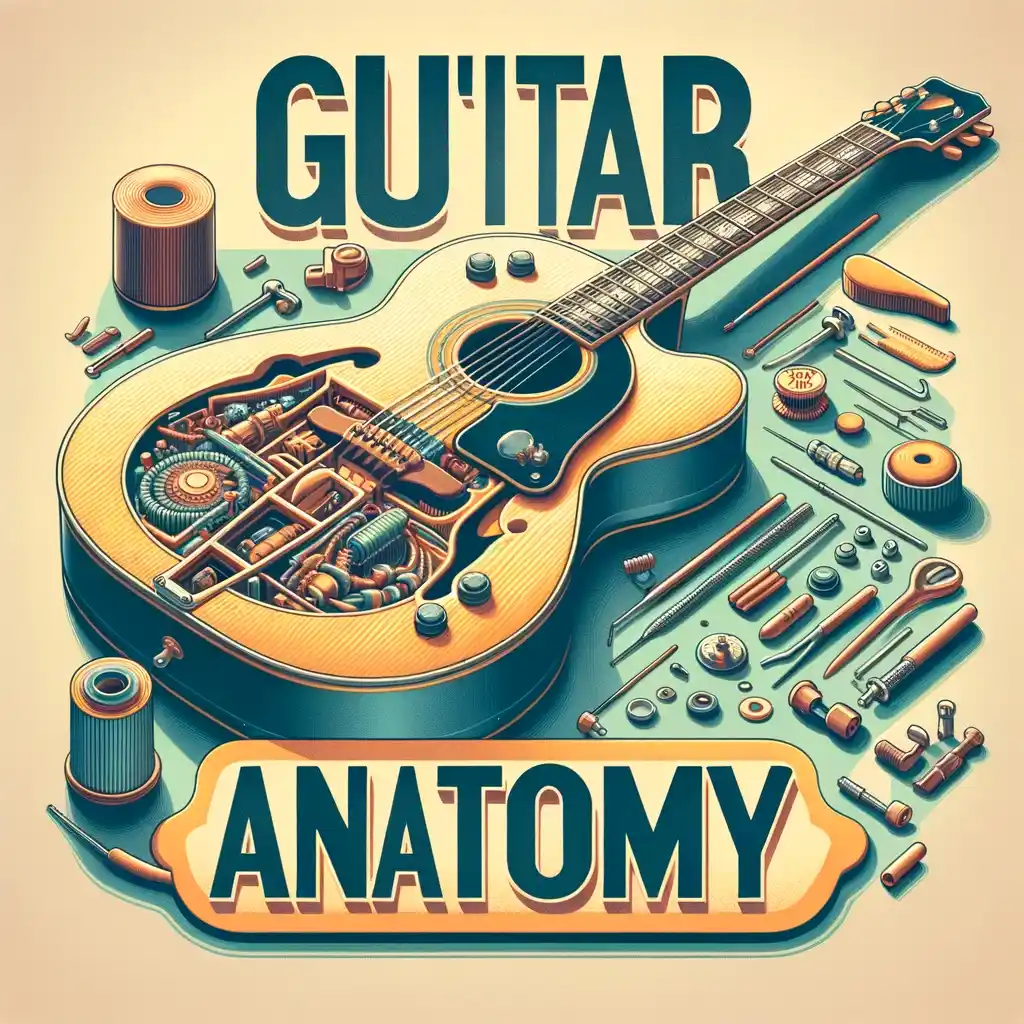
Guitar Anatomy – Parts of a Guitar
Ever stared at your guitar and thought, “What on earth is that thingamajig called?” or “Why does my guitar have a belly button?”
Fear not! We’re about to embark on the tour of your guitar’s anatomy, explaining each part in a way that even your grandma would get.
Table of Contents

Headstock
Starting from the top of your guitar, the headstock is like the crown jewel. But it’s not just for show.
Tuning Pegs (or Machine Heads): These are the little knobs you twist and turn to get your strings in tune. Each peg corresponds to a string, letting you tighten or loosen it until you hit that sweet, sweet note.
Nut: No, not the edible kind! Situated right below the headstock, the nut is a tiny piece (often made of bone, plastic, or metal) with grooves to guide the strings onto the fretboard.
Neck & Fretboard
This is where the magic happens for your fingers!
Fretboard (or Fingerboard): This is the front part of the neck where you press down on the strings to create different notes. Those metal strips you see? Those are the frets!
Frets: These metal strips divide the fretboard into sections. By pressing a string down behind a fret, you change the pitch of the note.
Position Markers (or Inlays): You might notice dots (or sometimes more fancy designs) on your fretboard. These are like road signs, helping you know where you are. Handy for when you’re shredding away and need to keep track!
Truss Rod: Hidden within the neck, this metal rod helps adjust the curvature of the neck. If the neck bends too much (or not enough), a truss rod tweak can bring things back in line.
Body
This is where your guitar gets its voice (and where all those cool stickers go!).
Sound Hole: Found on acoustic guitars, this hole projects the sound out. And yes, it’s totally the guitar’s belly button.
Pickguard: That plastic piece guarding the area around the sound hole? That’s the pickguard, ensuring your aggressive strumming doesn’t scratch your guitar’s lovely finish.
Bridge: No, not the one you walk over! The bridge is where the strings are anchored onto the body. It helps transfer the string vibrations into the guitar’s body, giving you that iconic guitar sound.
Saddle: This little ridge on the bridge supports the strings, and like the nut, it helps space them out evenly.
Other Details
Strings: Typically, guitars have six strings, but there are variations like 12-string guitars or basses with 4, 5, or 6 strings.
Strap Buttons: Found at the bottom of the body and sometimes on the upper part of the body or at the end of the neck. This is where your strap attaches, letting you rock out on stage hands-free.
